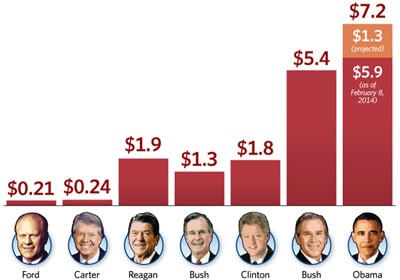How U.S. debt went out of control

|
Getting your Trinity Audio player ready...
|
Bush and Congress then financed two wars at the cost of $1.3 trillion, spent $272 billion on a Medicare prescription benefit, and expanded other defense and domestic spending. When the economy cratered in 2008, it cut deeply into revenues already diminished by Bush’s tax cuts. All told, Congressional Budget Office statistics show, Bush’s policies account for more than $7 trillion of the debt the U.S. has accumulated over the past decade. President Obama’s policies, including his $719 billion stimulus program, have added $1.7 trillion to that debt.
Today, future budget forecasts “are unrelievedly gloomy, showing huge deficits essentially forever.” And it all began with a choice, many years ago, to cut taxes to their lowest level in 60 years, with no cuts in spending. Whether president Trump will be able to turn the U.S. debt around with his business approach, only time will tell.

 Print
Print